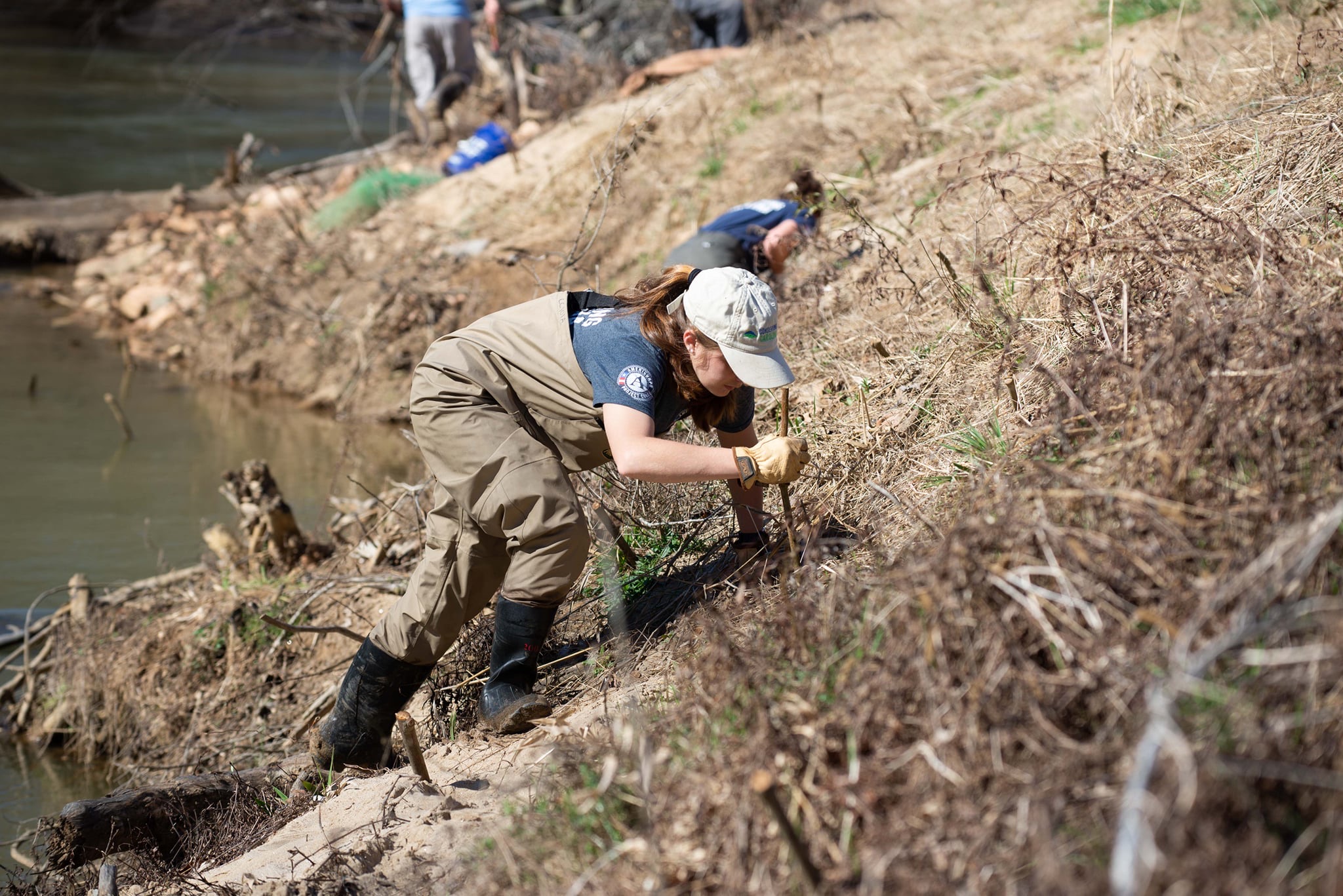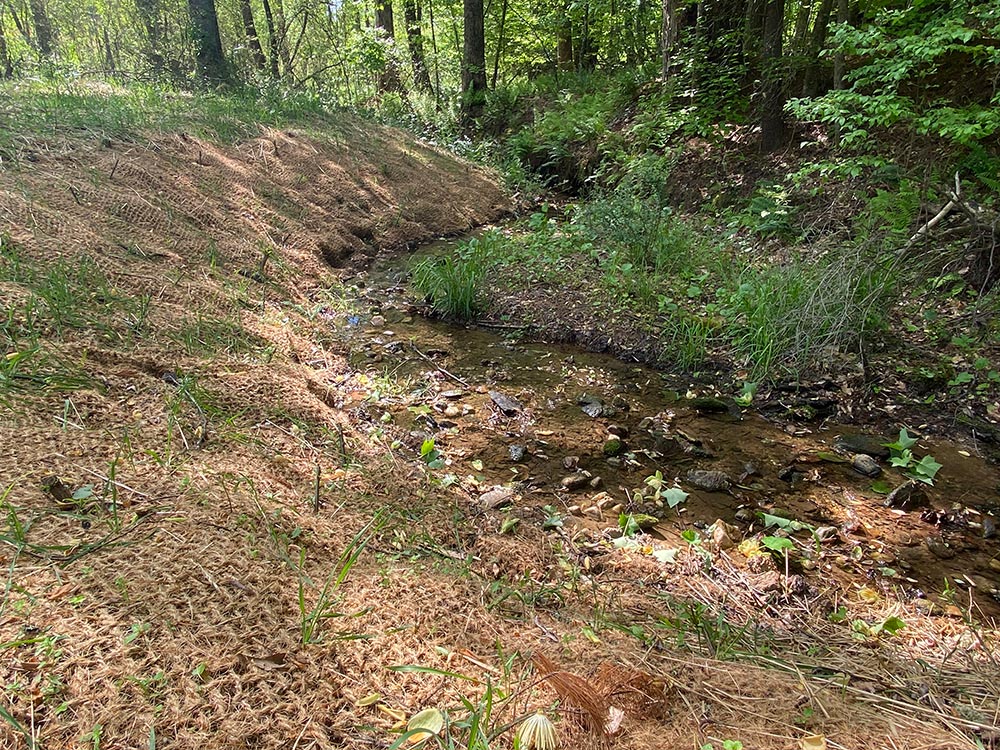Now is the Time to Establish Streamside Vegetation

By Conservation Easement Manager, Torry Nergart.
The Land is much the same as the garden, its tending is timed to the natural year. There are certain tasks that must be timed appropriately to ensure success. Timing your land management tasks in sync with the natural year will save you time, headache, energy, and cash. The one big task that can be done from now until around mid-March is vegetating your streamsides. Simply put, it’s time to grow plants along your creek to keep it from washing away. There is no other material that can hold a creek bank together like living plant roots. No, dumping rip-rap stone or broken concrete slabs onto the river bank will not work, sorry. Practicing this “old-school” technique at best is simply not effective, at worst results in dumping the problem onto your downstream neighbor. Native plants that are adapted to the Mountains’ riparian zones are the best way to keep your acreage at the same number that the tax assessor has on file, and not washing down the drain.
In recent memory, the County has experienced a few solid thrashings from major rain events. While several of the major damages from flooding have been repaired, it is the smaller ones, on smaller creeks and tributaries that are the ones we can fix at the homeowner or Community Center level. And since sediment, the region’s Number 1 water pollutant, often reaches toxic levels through an accumulation of smaller erosion events throughout a watershed, making every unstable stream bank a contributor to a collectively large problem. This is the “death by a thousand cuts” that mountain streams die from- there is no one single blame to assign, that must be spread out amongst all of us. Therefore we are all responsible for our shared clean water.

If you’re in need of bandaging one of these thousand cuts, from now until mid-March is the time to practice the “Live-Staking” method of growing trees and shrubs. The simple explanation of this horticultural technique is that certain plants can be cut into stakes, stabbed into the ground, and they will grow. The lengthier, more botanically precise explanation is that while taking advantage of plant dormancy for the Winter, we artificially trigger the plant by cutting to produce hormones that grow roots, right before Spring and the growing season arrive. It’s a very low-cost method, if you have the know-how and help from the community. By the latter I mean you’ll want to find a source, someone who will let you cut from their existing streamside plants- not a large hurdle, most folks are generous… and this technique does not destroy the donor plant, it’s just a pruning.
Silky Dogwood, Black Willow, Flowering Nine-bark, Tag Alder, Virginia Sweetspire and Elderberry will all grow from live stakes. Together, all of those plants make layers and screens, have Spring and Summer blooms that attract pollinators, produce early Fall fruit for wildlife, and have Winter interest with papery and red bark, and red semi-evergreen leaves. There’s year-round interest for the gardener, and year-round streambank stabilization for all the aquatic living things. (That’s Swida amomum, Salix nigra, Physocarpus opulifolius var. opulifolius, Alnus serrulata, Itea virginica, and Sambucus canadensis for those needing proper nomenclature of plants.)
Another benefit to live-staking is that the stakes of trees and shrubs themselves are substituted for manufactured wooden stakes if you are installing coir matting as well. This product is made of natural fibers (coconut or jute), is biodegradable, and holds seed in place. Return in the early Spring to seed over the coir matting with native grasses and herbaceous plants for further stabilization and flowering, green interest. Grasses like Bottlebrush Grass and River Oats aka “Fish on a Stringer” grass establish well in streamside zones and have curiously shaped seedheads. (Elymus hystrix var. hystrix and Chasmanthium latifolium.) Most any native plant of your choice like Swamp Milkweed (Asclepias incarnata) or Bee-Balms (Monarda didyma, clinopodia) can be plugged in at this time as well.
So like all good gardening, a lot of work goes in when we are the furthest from the green growing season. Prepare now for the coming floods, let’s get the whole French Broad River watershed buttoned up with streambank stabilizing repairs. Let’s end the cycle of erode, repair, erode, repair by planting trees and shrubs. Plants are our one great hope in this, and we are so lucky to have them as generous, helpful neighbors here in the mountains.
